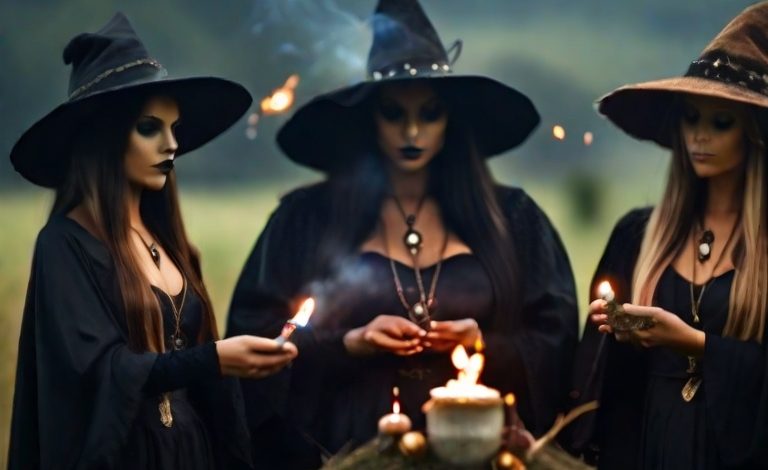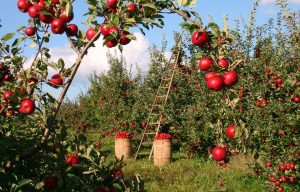
Agricultural rituals are one of the oldest forms of religious rituals. Agricultural rituals are used specifically to improve crops, animals, drought and famine, over time areas were set aside and temples built for these rituals. Among the tribes of Botswana, Africa kraals (villages) were built by the chiefs or kings specially to house those who journeyed to the site to take part or witness the annual rain harvest festivals. During rituals the Aboriginals used these as a platform for marriages and initiation rites. Agricultural rituals brought together tribes and populations. Agricultural rituals provided an opportunity for people to gather in order to celebrate the harvest or to prepare for the growing season.
The aim of rituals is to garner favour with deities and spirits, this is done by the forming of a bond between the person performing the ritual and the deity or spirit, communication with deities and other spirits is an important part of rituals. Animal sacrifice based on ancient myths is usually an integral part of most rituals. The hero in the story of Polyphemus and Odysseus manages to escape by holding on to the stomach of a ram which is later sacrificed. Sacrifice is part of the cycle of life which contains death and rebirth or sacrifice and renewal. The Celts believed that the sun god sacrificed his energy through marriage to the Earth goddess thus ensuring crop growth. Some tribes sacrificed animals after particularly bad weather, this was done to appease the gods, particular animals were chosen depending on how severe the weather or famine was. Sacrifice is common in agricultural societies, some religions used human sacrifice as part of their ritual, only the best livestock was sacrificed, and no inferior animals were used. Sometimes young children were sacrificed because of their innocence, their tears were symbolic of rain. Two of the most important gods invoked by the Aztecs of Central America were Tlaloc, the god who controlled rain, and Xipe Totec, the god of the spring rebirth.
The lunar calendar plays an important part in the hunting, fishing and growing seasons, these rituals are “cycle rituals” linked with the changing of the seasons and time going by. Agricultural  festivals were where people gathered to plan and chart on the calendar future rituals. Elaborate rituals were performed with the first harvest, the Greeks celebration was known as “festival of flowers” and was celebrated in March, coinciding with the spring equinox. The festival First Fruits festivals were celebrated in January by Saharan African tribes. Thesmorphoria the Greek festival revolved around the goddess of agriculture Demeter, to celebrate the reunion between Demeter and her daughter Persephone, this celebrated the revival of the growing season.
festivals were where people gathered to plan and chart on the calendar future rituals. Elaborate rituals were performed with the first harvest, the Greeks celebration was known as “festival of flowers” and was celebrated in March, coinciding with the spring equinox. The festival First Fruits festivals were celebrated in January by Saharan African tribes. Thesmorphoria the Greek festival revolved around the goddess of agriculture Demeter, to celebrate the reunion between Demeter and her daughter Persephone, this celebrated the revival of the growing season.
Usually shamans or priests oversee the complex process of rituals, the hierarchies were quite rigid. Among the Kayan people of Borneo only the priests guide the elaborate rituals, information is passed on orally. Within any ritual shamans and priests are given profound status, they have an abundance of knowledge and can perform seeming miracles. Daoist priests underwent grueling training, giving them the unique ability to understand meteorological conditions and to know when weather conditions were favourable for rain rituals. Most rituals have at their core a feminine bent as female deities are associated with birth, fertility and nurturing. The Ashanti of Ghana, Africa, shamans are said to receive their divine blood from their mother, who has transferred it from the goddess of the Earth.
The Ifugao people of the Philippines use small carved figures known as bululs, which are considered as the earthly home of the spirits of the rice gods during the harvest festival. The Shang dynasty of China reserved bronze solely for the making of ceremonial items and for royal use. During religious rituals observed by the many tribes, objects are used as talismans, including stones, crystals, handmade wooden objects, including altars and totems, in some societies precious metals or minerals were used to make objects used in rituals. During the planting season, small to huge detailed masks are used during ceremonies, they are believed to ward off evil spirits. The Kenyah-Kayan people of Borneo make elaborate masks (hudoqs) to frighten bad spirits away from the rice fields, while the Maya of Central and South America adhere to a ritual cleansing for themselves and their idols before using them during festivals.
Many agricultural rituals are designed to invoke the gods and are very complex. During the Celtic period in Britain people lit huge fires (Beltaine fires), the ashes from these fires were believed to improve any harvest after being sprinkled over the fields. Japanese sumo was born out of religious festivals thought to urge the gods to bring about a successful harvest. Rituals are very close to the hearts of the Australian Aborigines as they maintain their sacred sites, tribes care for specific sacred sites. Any tribe or group having difficulty with their crops, blame it on the angry gods, this is when divination rituals are undertaken to decide what needs to be done to gain favour from the gods. There are ceremonies to bring about rain, to stop the rain if there is flooding, ceremonies for droughts and ceremonies for infestation. “Thunder Rite” is a ritual performed by the Iroquois of North America this was to appease the gods when the sun was withering the crops and was a direct plea to the gods to reverse the inclement weather.
Agricultural rituals were passed down from generation to generation, the Iroquois had a complex planting system for corn, beans and squash. A complex ritual which involved presoaking the seeds in water, blessing and planting them was tribal women’s responsibility. Filipino tribes plant seeds at night during their rituals, the Maya corn god Yum K’aax needed humans to protect him through rituals, in return he provided food for the people. During a harvest ceremony held by the Paiwan an Asiatic people, a priest ritually divides the crops into three categories, human consumption, seeds to be planted the next year and animal consumption.
Balance is an integral component of tribal agricultural rituals, farmers are encouraged to only grow enough to feed the family as in early agricultural societies there were not many outlets for overabundance. This was especially adhered to by the Zapotec people of Central America, if the spring rains are heavy the farmers plant less so the yields will not be higher than the family’s needs. As societies became more sophisticated tools were blessed during rituals to ensure successful crop yields, fire was often used to purify. The Bunan people of Taiwan worshipped their tools after the harvest then carefully stored them for future use.
In modern societies rituals such as the maypole represented the tree of life, fertility and the growing season for crops. The present day custom of planting a tree as a remembrance of the deceased heralded from ancient agricultural rituals. In Cornwall England the corn king ritual was practiced and became the Christian ceremony of Lammas (loaf-mass), during this ceremony loaves of bread were baked from the first harvest of the year, this continues today. The Andhra and Pradesh people of India combined Hinduism with ancient agricultural traditions which included the older agricultural ritual the “Frog Song” (Kappatalli pata), this ritual was practiced to urge frogs to croak, the people believe frogs are the bringers of the rain. Daoist monks in China perform rituals to avert natural disasters such as plagues of insects or flooding.
Many agricultural beliefs of modern times are built on the foundation of ancient rituals, followed religiously by some cultures and modified for today by others.




